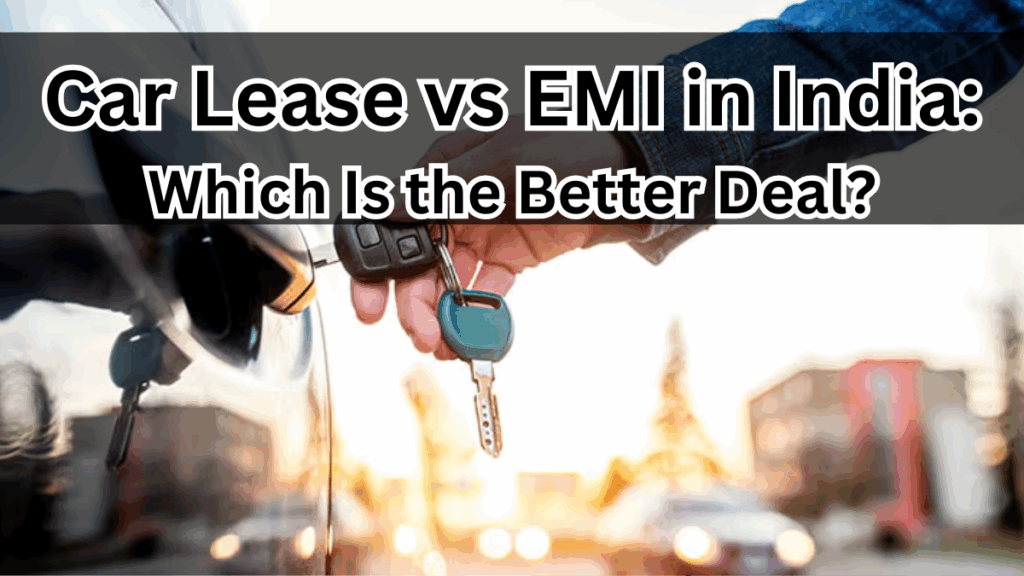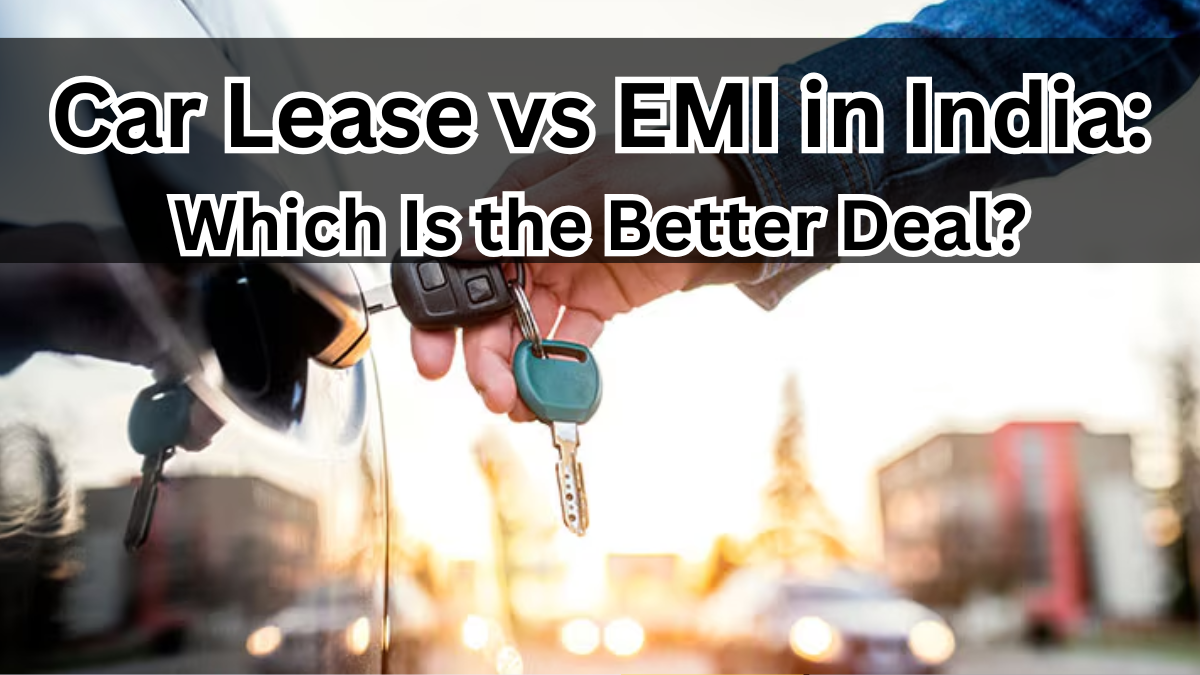Buying a car is a big financial decision, and in India, two popular routes are becoming increasingly competitive: car leasing and car purchase via EMI (Equated Monthly Installment). With both options offering unique advantages, it’s natural to wonder which one truly makes more sense in 2025.
Let’s explore a detailed ownership cost comparison 2025 to see which option is better suited for you.

Car Lease vs EMI India: The Basics
Before deciding, it’s essential to understand what each option really means.
What is Car Leasing?
-
You pay a monthly rental to use the car.
-
The car remains owned by the leasing company.
-
After the lease ends, you can return the car, renew the lease, or lease a new vehicle.
What is Car EMI?
-
You purchase the car via loan installments.
-
Monthly EMI payments lead to full ownership.
-
After the loan is fully paid, the car is yours.
Key Differences: Car Lease vs EMI India
Here’s a quick ownership cost comparison 2025 between car leasing and EMI-based purchase.
| Feature | Car Lease | EMI Purchase |
|---|---|---|
| Ownership | No ownership | Full ownership after EMI term |
| Monthly Cost | Lower than EMI | Higher than lease payments |
| Upfront Payment | Minimal or zero | High down payment required |
| Maintenance | Often included | You pay separately |
| Flexibility | Easy to upgrade car models | Long-term commitment |
| Tax Benefits | Available for salaried professionals and businesses | Limited personal tax benefits |
Pros and Cons: Car Lease vs EMI India
Advantages of Car Leasing
-
Lower upfront and monthly costs.
-
Easy to switch to new car models frequently.
-
Maintenance and insurance are often included.
Drawbacks of Car Leasing
-
You never own the vehicle.
-
Lease termination charges can be high.
-
Mileage restrictions may apply.
Advantages of Car Purchase via EMI
-
Full ownership after loan repayment.
-
Freedom to modify and use the car as you like.
-
No mileage restrictions.
Drawbacks of EMI Purchase
-
Higher upfront cost (down payment + EMIs).
-
Depreciation affects resale value.
-
Maintenance and insurance are your responsibility.
Which One Should You Choose?
The decision between car lease vs EMI India in 2025 depends on your financial goals and driving habits.
Choose Car Lease if:
-
You want to drive new cars every few years.
-
You prefer lower monthly expenses.
-
You want hassle-free maintenance and easy upgrades.
Choose EMI Purchase if:
-
You plan to keep the car for a long time.
-
You prefer owning an asset.
-
You can handle higher upfront and monthly costs.
Ownership Cost Comparison 2025: Lease vs EMI Example (Mid-Range Sedan)
| Cost Element | Car Lease (Per Month) | EMI Purchase (5 Years Loan) |
|---|---|---|
| Monthly Payment | ₹20,000 | ₹28,000 |
| Down Payment | ₹0-₹50,000 | ₹1,50,000 |
| Maintenance | Included | Approx. ₹1,000-₹2,000/month |
| Insurance | Included | ₹20,000-₹30,000/year |
| Resale Value | Not applicable | You can sell the car |
Final Thoughts
In the car lease vs EMI India conversation, the better choice depends on your lifestyle and budget. If you like switching cars often and prefer lower costs, leasing is a smart option. If long-term ownership matters to you, EMI purchase is more beneficial.
Carefully reviewing the ownership cost comparison 2025 can help you make a decision that matches your financial comfort and driving needs.
FAQs
1. Is leasing cheaper than EMI in the long run?
Leasing usually offers lower monthly payments, but over many years, buying via EMI may cost less because you eventually own the car.
2. Can I buy the car after the lease period ends?
Some leasing companies offer a buyout option, but this depends on the lease agreement. It’s best to confirm in advance.
3. Does car leasing affect my credit score in India?
Yes, leasing is a financial contract. Timely payments can improve your credit score, while missed payments can negatively impact it.
4. Which is better in 2025: Car lease or EMI for electric vehicles?
Leasing is often better for electric vehicles in 2025 as it allows you to easily upgrade when battery technology and EV models improve.
Click here to learn more
